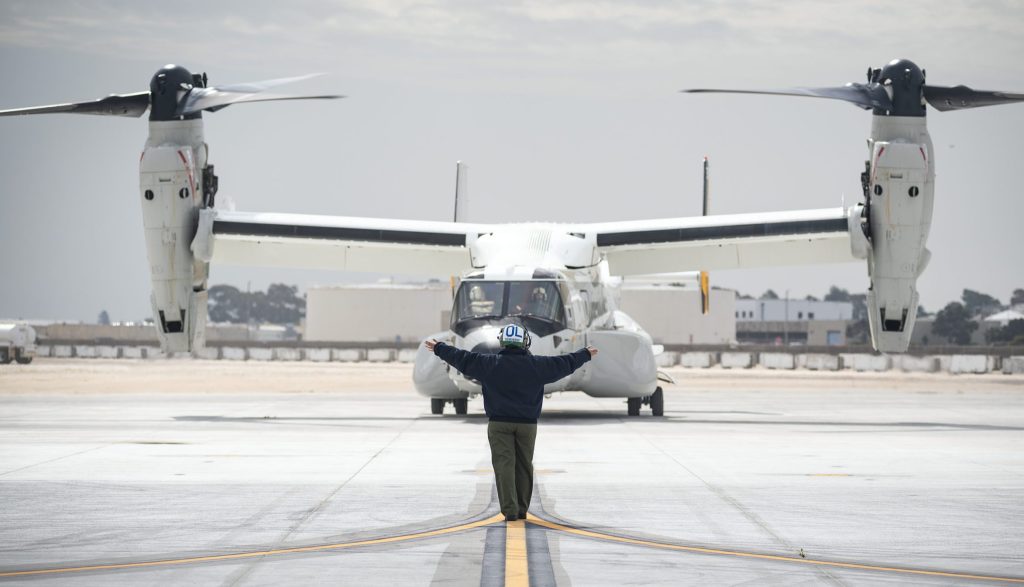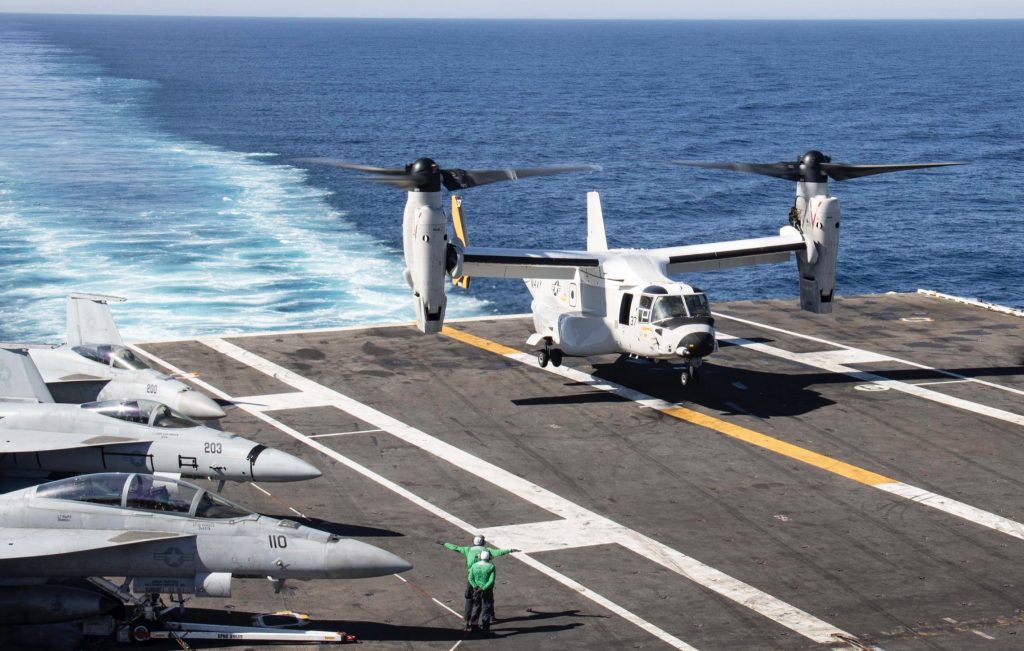
For the first time since the December 6, 2023 grounding of all V-22 Ospreys, the U.S. Navy returned its CMV-22 Osprey fleet to flight status March 8. Coronado is home to the Fleet Logistics Multi-Mission Wing (VRM) that oversees all Navy Osprey squadrons. Along with the VRM Wing, the SunHawks of VRM-50, and the Titans of VRM-30 are also based on Naval Air Station North Island. A fairly new aircraft in the Navy’s arsenal, the CMV-22 arrived to North Island in June of 2020 and has been gradually taking over the Carrier On-Board Delivery mission from the C-2 Greyhound.
The grounding of V-22s occurred in the wake of a U.S. Air Force V-22 mishap investigation that found material component failure led to the crash that resulted in the loss of eight Airmen on November 29, 2023. According to a NAVAIR press release, “The grounding provided time for a thorough review of the mishap and formulation of risk mitigation controls to assist with safely returning the V-22 to flight operations.”

During the three-month investigation and review, both maintenance and procedural changes were implemented to address the material failure. These changes provided leadership with the confidence to allow a safe return to flight operations.
“The U.S. Navy, after a thorough review of available engineering data and revisions to the flight manual in place, will now initiate our return to flight plan,” said Vice Adm. Dan Cheever, Commander, Naval Air Forces. “The safety of our pilots, aircrew and surrounding communities remains of paramount importance.”
Cheever explained the process to returning to full flight operations saying, “Safe operations of the CMV-22 is enabled by a crawl – walk – run incremental approach. First, Fleet Logistics Multi-Mission (VRM) Wing will oversee enhanced maintenance checks and tailored training events to renew aircrew currency and unit readiness. Next, VRM Squadrons will conduct functional check flights. The earliest flight events will be done by our most experienced pilots first — functional check pilots and instructor pilots. In the coming months, aircraft and schedule permitting, the most experienced pilots will bring co-pilots up to currency status. We will work to achieve day flight operations, then night flight operations, and then resume training of our Fleet Replacement Squadron pilots.”

It has been a challenging time for the VRM community during the grounding of the Osprey. Cheever closed his remarks by saying “The Sailors assigned to the VRM squadrons have demonstrated exceptional knowledge, skill and professionalism – and a great deal of patience – to ensure they are ready to execute the Return to Flight plan immediately.”
Despite the grounding of the Osprey fleet, the carrier strike groups on deployment and in the training cycle were still able to accomplish their tasking by using other assets. Commander Beth Teach, Public Affairs Officer for Naval Air Forces said, “The carrier strike group operates with multiple logistical redundancies, including pier-side on-load, underway replenishment, and rotary-wing support for movement of personnel and cargo.”

According to the VRM-30 website, “Based at NAS North Island, the ‘Titans’ of VRM-30 were established to begin the Navy’s transition from the C-2A Greyhound, which has provided logistics support to aircraft carriers for four decades, to the CMV-22B. The CMV-22B is the Navy version of the V-22 Osprey, a multi-engine, dual-piloted, self-deployable, medium lift, vertical takeoff and landing (VTOL) tilt-rotor aircraft, which has an increased operational range, faster cargo loading/unloading, increased survivability and enhanced beyond-line-of-sight communications compared to the C-2A.”




